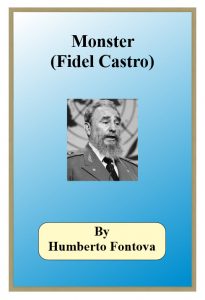Fidel Castro entered Havana on January 8, 1959, to wild acclaim from all quarters. Most Cubans were jubilant; Castro was promising an end to the corrupt governments that had plagued Cuba since independence. Far from any Communism, Castro was promising a revolution “as green as Cuba’s palm trees!” with national elections in three months. Private property would be secure, a free press guaranteed, friendly relations with the U.S. were essential.
“Fidel esta es tu casa!” read impromptu signs that were springing up across the front of thousands of Cuban homes, including mansions, humble country shacks and everything in between.
The New York Times had been singing Castro’s praises since the first interview with him as a rebel in February 1957. By now most of the international press had joined the cheerleading. Jack Paar never treated a guest on his Tonight Show as deferentially as he treated honored guest Fidel Castro. Ed Sullivan hailed Castro as “Cuba’s George Washington.” Retired president Harry Truman called Castro a “good young man trying to do what’s best for Cuba. We should extend him a hand.” The U.S. actually accorded diplomatic recognition to Castro’s government more quickly than it had recognized Batista’s in 1952. In fact, the promptness of this U.S. recognition set a record for recognition of a Latin American government. Usually the process took weeks;for Castro, it took mere days.
Yet within three months of his entry into Havana, Castro’s firing squads had murdered an estimated 600-1,100 men and boys, and Cuba’s jails held ten times the number of political prisoners as under Fulgencio Batista, who Castro overthrew with claims to “liberating” Cuba.
Barely a year in power, Castro was referring to the U.S. as “a vulture preying on humanity!” And most of Cuba’s newspapers and TV stations (Cuba had more TVs per capita at the time than Germany,Canada or France) were under government control, to better serve “the people.” Six months later he confiscated all U.S. properties on the Island, 5,911 businesses worth $2 billion worth, along with most property and businesses owned by Cubans.
